Danielle: Welcome to Fresh Fiction, Jennifer! We are so excited to celebrate the release of THE WOMEN’S MARCH with you. This book is full of incredible historical detail about the women’s suffrage movement. What inspired you to tackle this topic?
Jennifer: The idea for THE WOMEN’S MARCH first came to me in January 2017, soon after the Women’s March on Washington the day after the inauguration of the 45th president. Nearly half a million demonstrators marched in the US capital to protest against his past reprehensible treatment of women and to advocate for women’s rights and other human rights issues. Millions of other protesters joined in satellite marches around the world, including an estimated 100,000 in my hometown of Madison, Wisconsin.
Afterward, when I read news coverage of the events, I was intrigued to learn that the Women’s March of 2017 had an important but nearly forgotten historical precedent. More than one hundred years earlier, thousands of women had assembled in the nation’s capital the day before the inauguration of President Woodrow Wilson to demonstrate on behalf of woman’s suffrage. The organizers planned a beautiful, dignified parade from the Capitol down Pennsylvania Avenue past the White House, with elegantly costumed marchers, bands, equestrian, automobiles conveying dignitaries, and lavish floats depicting the history of the suffrage movement and celebrating women’s achievements. Five thousand marchers participated, making the 1913 Woman Suffrage Procession the largest political demonstration in the nation’s history to that point. It was witnessed by an estimated quarter of a million spectators, most of whom had come to Washington for the inauguration and were not sympathetic to the suffrage cause. Due in large part to the police department’s failure to provide adequate security, unruly throngs of men forced their way onto Pennsylvania Avenue, where they physically and verbally harassed the suffragists, tore banners from floats, spooked horses, and otherwise disrupted the procession. Yet the marchers persisted, and eventually the mob was forced aside and the parade continued.
Looking deeper, I discovered striking parallels between the Woman Suffrage Procession of 1913 and the 2017 Women’s March on Washington. In both centuries, the organizers faced daunting logistical obstacles as they brought their plans to fruition; participants were subjected to ridicule, harassment, and physical harm; disagreements occurred between factions with competing interests; and heated controversies erupted over the exclusion or marginalization of women of color. The differences between the two marches, defined by social and cultural changes spanning a century, were equally compelling. My imagination was captivated, and I decided to learn more about this momentous event and the people who took part in it, and to share the story with my readers.

The three women at the center of your story are based on real people: Alice Paul, Maud Malone, and Ida B. Wells. While researching these amazing women, what did you look for to show insight into them as people, not just historical figures?
As I delved deeper into my research for THE WOMEN’S MARCH, I realized it would be crucial to explore the intersection of sex, class, and race that had so profoundly shaped the suffrage movement in the United States. I also knew that my narrators, whom I would choose from among the many remarkable women involved in suffrage campaigns of the time, must be strong, independent, courageous women who played significant roles in the procession. My first choice was Alice Paul, because as the director of the march, her perspective was absolutely essential to the story. The second to join my cast of characters was Ida B. Wells-Barnett, the renowned civil rights activist, journalist, and co-founder of the NAACP, who had adamantly insisted that the suffrage procession—and the proposed constitutional amendment itself—must include women of color. My third narrator was New Yorker Maud Malone, the daughter of Irish immigrants and an outspoken advocate for women’s and workers’ rights. Unlike Alice and Ida, whose achievements are deservingly studied and celebrated, Maud is, regrettably, little remembered today. In the early twentieth century, however, this “militant suffragist librarian” was famous (or notorious) for organizing outdoor suffrage rallies in New York City, for boldly challenging presidential candidates at election rallies, for provoking her own arrest to draw attention to the cause, and for passionately advocating for the rights of workers, and working women in particular. To offer insight into them as women who live and breathe on the page rather than static historical figures, I drew upon their childhood experiences and personal relationships to create the imagined lives and interior worlds that elude the historical record.
One of my favorite things to ask authors of historical fiction is what do you think the past informs us about the present and/or the future?
Historical fiction is my favorite genre because history has so much to teach us if we pay attention.
History has taught us, for example, that terrible consequences follow if we look the other way when certain groups become the targets of hate. Knowing history can also prevent us from undoing the accomplishments of previous generations. Americans take for granted our forty-hour workweek, overtime pay, reasonably safe working environments, and restrictions on child labor because the vast majority of us have never lived in a time when ten-year-olds toiled in factories instead of attending school, or when garment workers died horrifically in fires because owners locked factory stairwells and doors to prevent truancy and theft. History tells us we should not go backward, although we don’t always listen.
The desire to avoid repeating the mistakes of the past is probably the reason that first comes to mind when we consider whether it is important to retell the stories of history. When we’re born, we enter a story already in progress, and we rely upon the knowledge and experience of our elders as we find our way. As we grow up, our knowledge of history can help us to discern what is valuable—what is true wisdom—and what is merely inherited prejudice and unquestioned tradition. Without the proper historical context in which to interpret current events, we leave ourselves at the mercy of people who might seek to exploit our hopes and fears for their own gain.
Many of our readers are big fans of your beloved Elm Creek Quilts series! Have you been working on any recent quilting projects of your own lately?
I recently published a new book of quilt patterns, HARRIET’S JOURNEY, which was inspired by the ninth book in the Elm Creek Quilts series, CIRCLE OF QUILTERS.
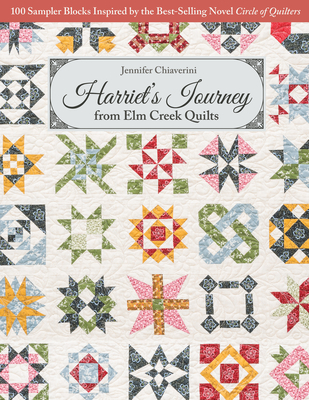
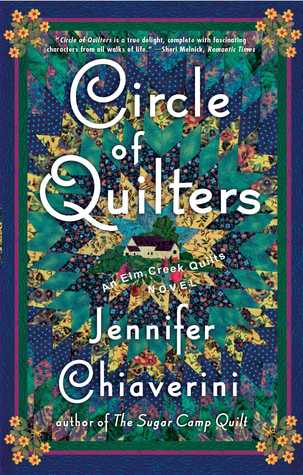
It’s summer (finally) and the world is cautiously opening up—do you have any fun plans this to enjoy the warm weather?
I’m looking forward to revisiting some of my favorite places in Michigan’s Upper Peninsula with my husband and our two sons.
What can readers expect from you next?
My next novel, SWITCHBOARD SOLDIERS (William Morrow, 2022), tells the story of the courageous young women who served as telephone operators in the United States Army Signal Corps in World War I. At that time, telephones were the most important means of communication between American headquarters, allied outposts, and troops in the field, and these telephone operators—who understood themselves to be the first women enlisted in the US Army—were absolutely essential to the war effort. Their perseverance, courage, and dedication helped convince a skeptical president, Congress, and the public that women too deserved the right to vote. Having bravely accepted the responsibilities of citizenship, they had proven themselves beyond all doubt well-deserving of a citizen’s fundamental rights. The valiant women of the U.S. Army Signal Corps broke down barriers and cleared the way for generations of women who would follow after, not only in the military but in all aspects of public and professional life.
Rapid Fire Random Questions
Favorite candy: Tony’s Chocolonely Milk Caramel Sea Salt.
Favorite way to be kind to yourself: Healthy diet, regular exercise, and sufficient sleep.
Best compliment you recently gave to someone: “You’re the best husband in the world and I’ll always be glad I married you.” (It’s our twenty-seventh anniversary today.)
Favorite flower: Lilacs
Random interesting fact you like to tell people: I don’t really have one. I prefer to learn interesting facts from other people.
Best vacation you’ve ever taken: I’ve had many wonderful vacations through the years, but I can’t single out one as the best.
Earliest celebrity crush: I’ve never had a celebrity crush.
Cake or pie: Cookies, preferably chocolate chip.
Last book you read that you really LOVED: THE INVISIBLE LIFE OF ADDIE LARUE by V. E. Schwab
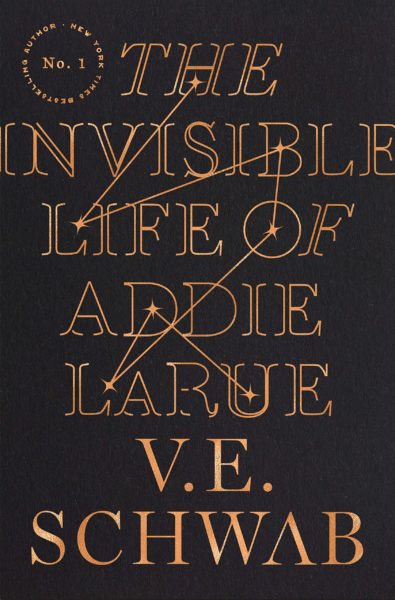
You have a totally free afternoon – no deadlines, no obligations, no Twitter notifications! What do you do?: I’d love to go hiking in one of our beautiful Wisconsin state parks with my family.
THE WOMEN’S MARCH by Jennifer Chiaverini
New York Times bestselling author Jennifer Chiaverini returns with The Women’s March, an enthralling historical novel of the woman’s suffrage movement inspired by three courageous women who bravely risked their lives and liberty in the fight to win the vote.
Twenty-five-year-old Alice Paul returns to her native New Jersey after several years on the front lines of the suffrage movement in Great Britain. Weakened from imprisonment and hunger strikes, she is nevertheless determined to invigorate the stagnant suffrage movement in her homeland. Nine states have already granted women voting rights, but only a constitutional amendment will secure the vote for all.
To inspire support for the campaign, Alice organizes a magnificent procession down Pennsylvania Avenue in Washington, DC, the day before the inauguration of President-elect Woodrow Wilson, a firm antisuffragist.
Joining the march is thirty-nine-year-old New Yorker Maud Malone, librarian and advocate for women’s and workers’ rights. The daughter of Irish immigrants, Maud has acquired a reputation—and a criminal record—for interrupting politicians’ speeches with pointed questions they’d rather ignore.
Civil rights activist and journalist Ida B. Wells-Barnett resolves that women of color must also be included in the march—and the proposed amendment. Born into slavery in Mississippi, Ida worries that white suffragists may exclude Black women if it serves their own interests.
On March 3, 1913, the glorious march commences, but negligent police allow vast crowds of belligerent men to block the parade route—jeering, shouting threats, assaulting the marchers—endangering not only the success of the demonstration but the women’s very lives.
Inspired by actual events, The Women’s March offers a fascinating account of a crucial but little-remembered moment in American history, a turning point in the struggle for women’s rights.
Women’s Fiction Historical [William Morrow, On Sale: July 27, 2021, Hardcover / e-Book, ISBN: 9780062976000 / eISBN: 9780062976048]
Buy THE WOMEN’S MARCH: Amazon.com | Kindle
| BN.com | Apple Books | Kobo | Google Play | Powell’s Books | Books-A-Million | Indie BookShops | Ripped Bodice | Love’s Sweet Arrow |
Walmart.com
| Book Depository | Target.com | Amazon CA | Amazon UK | Amazon DE | Amazon FR
About Jennifer Chiaverini
Jennifer Chiaverini is the New York Times bestselling author of several acclaimed historical novels and the beloved Elm Creek Quilts series, as well as six collections of quilt patterns inspired by her books.
Her original quilt designs have been featured in Country Woman, Quiltmaker, Quiltmaker’s 100 Blocks Volumes 3-5, and Quilt, and her short stories have appeared in Quiltmaker and Quilters Newsletter.
A graduate of the University of Notre Dame and the University of Chicago, she lives with her husband and two sons in Madison, Wisconsin.
About her historical fiction, the Milwaukee Journal Sentinel writes, “In addition to simply being fascinating stories, these novels go a long way in capturing the texture of life for women, rich and poor, black and white, in those perilous years.”
WEBSITE | AMAZON | BOOKBUB | GOODREADS | TWITTER | FACEBOOK | INSTAGRAM
***
About Danielle Jackson Dresser
Danielle Jackson Dresser is a contemporary romance author (her debut novel with Berkley will be out in 2022!), avid reader, lackluster-yet-mighty crafter, and accomplished TV binge-watcher.
Once upon a time, she was a publisher publicist and continues to cultivate her love of books and reading by chatting with the best authors in the business as the Editorial Manager of Fresh Fiction and co-host of the Fresh Fiction podcast. Danielle is one of the Boozy Book Broads, a monthly author chat show streamed live on YouTube. She also moderates panels, interviews authors, and hosts a book club at Love’s Sweet Arrow, the romance-focused independent bookstore.
Danielle lives in Chicagoland with her very own romance hero husband, darling daughter, and two tempestuous cats. Follow her on Twitter and Instagram, @DJacksonBooks.


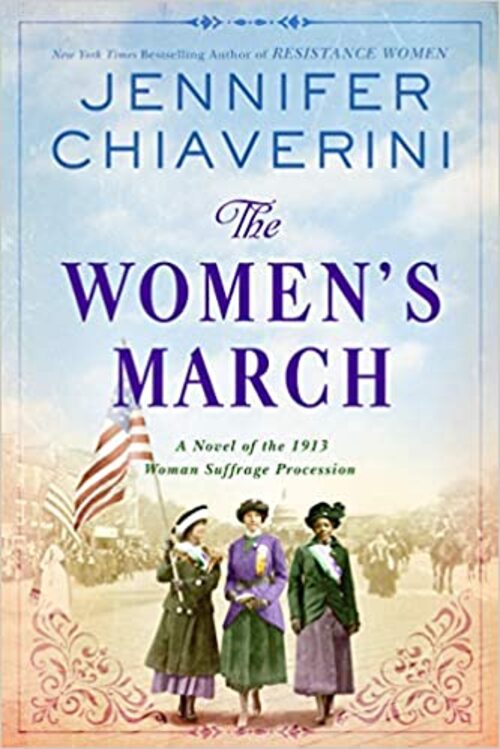
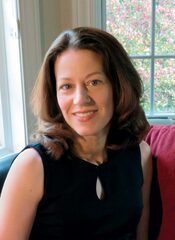
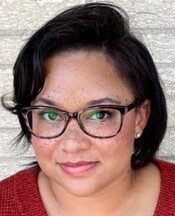
No Comments
Comments are closed.